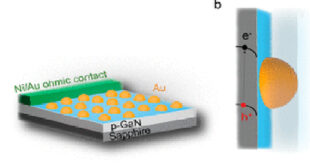Significance
Hypersonic reentry into the Earth’s atmosphere presents a complex set of challenges for communication systems on vehicles. During this phase, a plasma sheath forms around the vehicle due to the sharp increase in gas temperature caused by the generation of a bow-shaped detached shock wave. This plasma sheath disrupts communication signals between the vehicle and ground stations, resulting in the widely known RF blackout phenomenon. This blackout can have severe consequences, including the interruption of vehicle satellite positioning, data link loss, loss of measurement and control signals, and command transmission interruption. Therefore, it is imperative to find effective solutions to address the RF blackout problem.
Numerous research efforts have been made to understand and mitigate this issue. The United States, in particular, has undertaken projects like Firefight I, RAM, Mercury, Gemini, and Trailblazer II, among others, to explore various technical measures to mitigate reentry communication interruption. These initiatives have included research on the characteristics of the hypersonic plasma flow field, electron density reduction technologies, and electromagnetic wave propagation in plasma. Other countries have also conducted extensive ground tests focusing on measurement and control communication systems, vehicle materials, aerodynamics, and physical and chemical methods to reduce electromagnetic wave attenuation. Existing methods to reduce electromagnetic wave attenuation have shown promise but also have limitations. Altering the vehicle’s aerodynamic shape, for example, can reduce plasma electron density but may increase surface temperature and demand advanced thermal protective materials. Similarly, methods involving the application of electrophiles or external magnetic fields require significant space and can impact the vehicle’s structural design and aerodynamic performance. Increasing the frequency of communication electromagnetic waves helps reduce attenuation but introduces susceptibility to rain attenuation, affecting communication effectiveness. Given these limitations, there is a need to explore new approaches while continuing to research traditional methods.
In a new study published in the peer-reviewed Physics of Plasmas Journal led PhD candidate Cheng Luo, Professor Yanming Liu; Associate Professor Jia Zhang; Professor Min Yang from Xidian University developed a new regulation method of plasma sheath by pulsed discharge. The method is mainly to use the high-pressure aerodynamic actuation generated by the plasma actuator pulsed discharge to impact and disturb the plasma sheath, change the flow field distribution of the sheath, and achieve the purpose of reducing electron density of the plasma sheath.
The simulation results of actuator pulsed discharge are basically consistent with experiment results, and the simulation results show that in addition to producing plasma jets, in the discharge process of the pulsed discharge plasma actuator, the gas gap had breakdown and formed a discharge arc channel. The Joule heat of the arc made the temperature in the discharge region rise significantly, leading to a sharp increase in pressure, resulting in the high-pressure aerodynamic actuation effects. Under the background pressure of 800 Pa, the discharge of actuator can generate about 20000 Pa high pressure aerodynamic actuation, and the high-pressure region is larger than the jets range.
Simulations also consider the electron number density and temperature distribution of the plasma sheath around the RAMC-II vehicle at a reentry altitude of 30 km. The results show the formation of a strong shock wave due to the high reentry speed, with peak electron number density and temperature values located at the stagnation region. Comparisons with flight test data demonstrate the consistency of the simulation’s predictions with real-world measurements.
The primary focus of the authors in their study was the interaction between the pulsed discharge actuator and the plasma sheath surrounding the vehicle. The actuator’s high-pressure aerodynamic actuation generates shock waves and disrupts the plasma sheath. The simulation results indicate that this disruption has a significant impact on downstream pressure, velocity, and electron density. They examined the plasma sheath electron density attenuation duration under various energy densities of the actuator discharge region. The researchers found that the attenuation duration decreases as the energy density increases, and the attenuation amplitude increases first and then decreases. When the energy density is 7.5×1011 W/m3, the attenuation amplitude of electron density is the largest, reaching about 35%. Additionally, the minimum electron density downstream of the actuator depends on the decrease rate of electron density and the time required for shock waves and jets to propagate. This relationship between energy density and electron density attenuation provides valuable insights into the effectiveness of the pulsed discharge plasma actuator.
In conclusion, Cheng Luo and colleagues introduced a novel approach to mitigate the RF blackout phenomenon during hypersonic reentry by using a pulsed discharge plasma actuator. The simulation results validate the feasibility of this method and its potential to disrupt the plasma sheath and reduce electron density. The pulsed discharge actuator offers several advantages, including its low power requirements, compact size, and engineering feasibility. Future research will explore the use of multiple actuators and repetitive discharge to further regulate the electron density of the plasma sheath. Experimental verification in ground plasma wind tunnel devices will be a critical step in advancing this promising technology. Overall, this study represents a significant step towards addressing the RF blackout problem associated with hypersonic reentry, paving the way for more reliable communication systems for future missions in this challenging environment.
Reference
Cheng Luo, Yanming Liu; Jia Zhang, Min Yang. Numerical simulation of hypersonic plasma flow field disturbed by pulsed discharge. Phys. Plasmas 30, 043516 (2023)
 Advances in Engineering Advances in Engineering features breaking research judged by Advances in Engineering advisory team to be of key importance in the Engineering field. Papers are selected from over 10,000 published each week from most peer reviewed journals.
Advances in Engineering Advances in Engineering features breaking research judged by Advances in Engineering advisory team to be of key importance in the Engineering field. Papers are selected from over 10,000 published each week from most peer reviewed journals.




